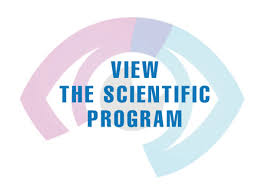
Mwendwa Eunice Mwenesi
Ministry of Health, Tanzania
Title: Identification and referral of at risk pregnancies and associated factors in Morogoro region, Tanzania, 2018.
Biography
Biography: Mwendwa Eunice Mwenesi
Abstract
Background: The identification and referral of women with risk pregnancies is recognized as one of key interventions during antenatal care. In Tanzania, the Reproductive and Child Health card number 4 (RCH4 card) is a guideline used in screening of pregnancy in order to identify risk pregnancies early and refer to hospital where emergency care can be provided to the woman. Women’s awareness of pregnancy risk factors and proper use of the RCH4 card can lead to early identification of risk pregnancies and hence timely and appropriate referral. Late or no referral due to missed risk factors has been associated with high maternal mortality.
Main Objective: To assess identification and referral of at risk pregnancies and associated factors in Kilombero district, Morogoro Region, Tanzania.
Methods: The study design was a cross-sectional facility-based. It involved 418 pregnant women who were attending ANC in randomly selected health facilities in Kilombero district. A two stage cluster sampling technique was used to select the study sample. In the first stage, 27 dispensaries were selected randomly using simple random sampling technique and all health centres and the only hospital in the district were included. The sample size was calculated using Leslie’s formula for a single proportion. For the second sampling stage, the sampling frame was the list of pregnant women registered in the facility Antenatal Clinic (ANC) register. A questionnaire with structured questions was used to interview women. Data was collected from RCH4 cards on risk factors identified and women were re-examined by the investigators to identify missed risk factors. The referral advice given was also noted. Data collected was analyzed using SPSS version 20 software where by descriptive, bivariate and multivariate analysis was done to determine independent factors influencing identification and referral of high risk pregnancies.
Results: A total of 418 women were recruited into the study with age range of 17- 43 years. About 32% of the women had pregnancy risk factors identified in the current pregnancy and recorded in their RCH4 cards. On re-examination, the proportion of women with pregnancy risk factors was found to be 55%. Around 44% of women had pregnancy risk factors missed. Age below 20 years and height less than 150 cm were the most missed pregnancy risk factors. Category C pregnancy risk factors were not assessed because they were not measured in most health facilities. Women who had no pregnancy risk factors during previous pregnancies had higher odds of having missed risk factors (OR=3.57, 95%CI=1.35-3.92). Similarly women with less than 4 antenatal visits had higher odds of having missed risk factors (AOR=1.51; 95%CI=1.26-4.97). Respondents with no formal education had 3.53 higher odds of having missed pregnancy risks (95%CI=1.24-9.98) as compared to those who had primary or secondary education. Out of 132 women who were identified with risk factors on their RCH4 cards, only 44(33.3%) were provided with appropriate referral advice. Majority of women, who were identified to be at high risk during ANC visits with either age below 20 years, or five or more pregnancies and previous caesarian section delivery, were not provided with appropriate referral advice. Women with pregnancy of ≥24 weeks had higher odds (AOR=3.40; 95%CI=1.60-19.14) of receiving appropriate referral advice as compared to those with lower gestation age. Respondents with 3 or more antenatal visits had almost 5-fold higher odds of being provided with appropriate referral advice (95%CI=1.26-10.21) as compared to those with 2 antenatal visits. Compared to women with no formal education, those who had secondary level education had significantly higher odds (AOR=8.12; 95%CI=1.40-16.99) of receiving appropriate referral advice. Attending ANC at dispensary level had higher odds (AOR=1.37; 95%CI=1.17-1.79) of being provided with appropriate referral advice as compared to those seen at Health centres.
None of the 30 health facilities visited had all essential equipments and supplies required for antenatal care services. Less than 50% of facilities had Hemoglobin level test, grouping and Rhesus factor, VDRL for syphilis or sugar for urine test available. Only 15(50%) of all facilities had urine albumin test available and 14(47%) of all facilities had an ambulance or an emergency transport for referred cases.
Conclusion: There is a significant proportion of missed risk pregnancies in Kilombero districts. Moreover, referral advice for women identified with risk factors is not being provided according to RCH4 guideline, with only a small proportion provided with appropriate referral advice. Antenatal Clinics do not have adequate essential equipment and supplies needed for provision of quality Antenatal care services which will include diagnosis of the risk factors.
Recommendations: Women should be made aware of the importance of communicating personal characteristics/obstetric history which is used to identify risk status to the health care providers. The Ministry of Health should ensure that health providers are trained on risk screening and referral of at risk pregnancies and conduct further studies to assess the effectiveness of the RCH4 card as a guideline used to identify and refer women with pregnancy risks. The Ministry of Health should also ensure that health facilities are well equipped and have essential supplies to enable provision of quality antenatal care risk screening services.

